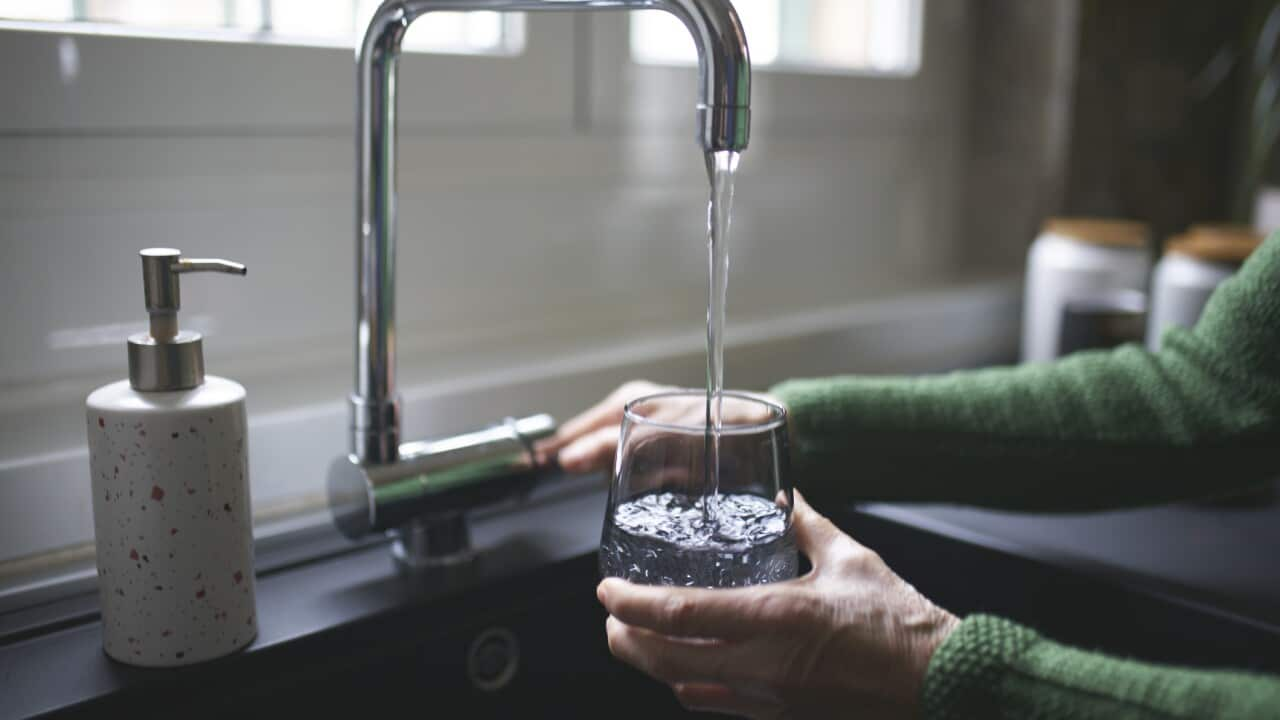For more than half a century, cities around the world have embraced drinking recycled wastewater, from Los Angeles to Barcelona and Cape Town.
Yet, in Australia, only a handful of cities have taken the plunge.
With climate change and population growth putting pressure on water supplies, experts believe purified recycled water could be the solution Australia needs.
How Singaporeans accepted wastewater as the norm
Singapore, a densely populated island nation, faces severe water scarcity due to limited natural resources and land for reservoirs.
Despite these challenges, it has emerged as a pioneer in turning sewage into safe, clean drinking water.
Professor Stuart Khan, head of civil engineering at the University of Sydney, explains the process.
“Purified recycled water is the practice of taking water from wastewater treatment plants, treated sewage that would otherwise have been discharged to the environment,” Khan told SBS News.
“But instead of discharging it to the environment, we take it through an advanced water treatment plant where it is purified to a very high degree so that it can be safely and reliably put back into drinking water supplies,” he said.
It’s a system that has long been accepted by the people of Singapore, where it is even used to brew a brand of beer.
Singapore’s success is largely attributed to its comprehensive public education campaign. In 2003, it opened a visitor centre at its first water recycling facility to promote awareness.
“They had a plan to bring every school child in Singapore through that visitor centre to learn about water recycling and sustainable water use,” Khan said.
Sydney takes the step
Efforts are now underway in Sydney to educate the public about using recycled wastewater.
Sydney relies on rainfall for around 85 per cent of its water supply, and the other 15 per cent comes from desalination.
Sydney Water project manager James Harrington says that during the most recent drought, from 2017 to 2020, dam levels plummeted by 50 per cent.
“We’re at a tipping point where we need to start looking at, what is the future of our water supply, with our dams depleting quite quickly in drought? So we need to start looking into the future about, what can we do to shore up our water supply?” Harrington said.
Purified recycled water is being tested as a viable alternative at the Quakers Hill sewage plant in north-west Sydney.
The facility’s Purified Recycled Water Discovery Centre, opened in late 2023, serves three purposes: testing the technology, educating the public, and training operations teams.
Harrington says community involvement is key.
“We love having the public come out here and have the conversation with us about what the technology is and all the work that goes into it to ensure that the water is safe and reliable,” he said.
Perth leads the way
With water security a challenge globally, around 60 cities are exploring the idea of recycled wastewater, potentially adding to the three dozen that have already adopted the process.
Unlike Sydney, Perth has long grappled with limited access to large dams, relying instead on groundwater.
Over the past three decades, climate change has exacerbated water scarcity in Western Australia, leading to innovative solutions like its groundwater replenishment scheme.
“[It] involves taking water from a wastewater treatment plant, purifying that water through advanced water treatment processes, [including] reverse osmosis, ultraviolet disinfection, and then putting that water back down into the important aquifers,” Khan said.
“And those aquifers now contain part of the water that occurs there naturally, but also the purified recycled water. Then that becomes their drinking water supply going into the future.”
Experts emphasise wastewater purification is both a safe and smart way to future-proof supplies.


